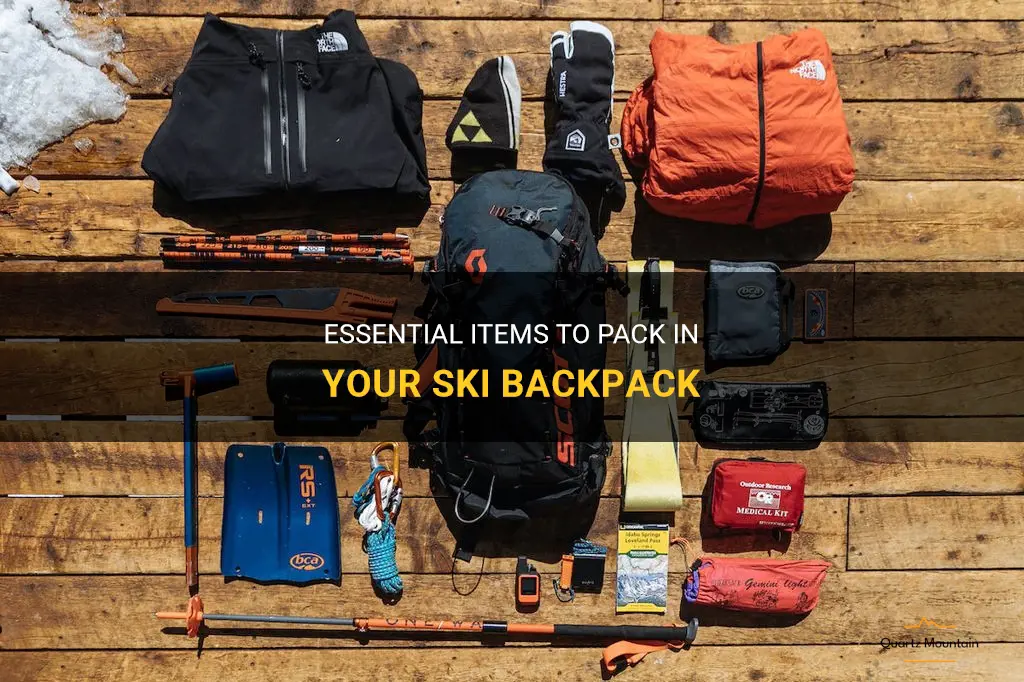
Are you heading off on a thrilling skiing adventure? If so, it's important to ensure that you have all the essential items packed in your ski backpack. From safety gear to snacks, having the right items with you can make all the difference on the slopes. In this article, we'll explore the must-have items that should be in every skier's backpack, ensuring that you have a safe and enjoyable time on the mountain. So, grab your backpack and let's get packing for your ski trip of a lifetime!
What You'll Learn
- What are the essential items to pack in a ski backpack for a day on the slopes?
- Are there any specific safety items that should be included in a ski backpack?
- What clothing and accessories should be packed in a ski backpack for changing weather conditions?
- Are there any recommended food and drink items to pack in a ski backpack for energy and hydration on the slopes?
- Is there any additional equipment or gear that should be packed in a ski backpack, such as a repair kit or extra ski pole?

What are the essential items to pack in a ski backpack for a day on the slopes?
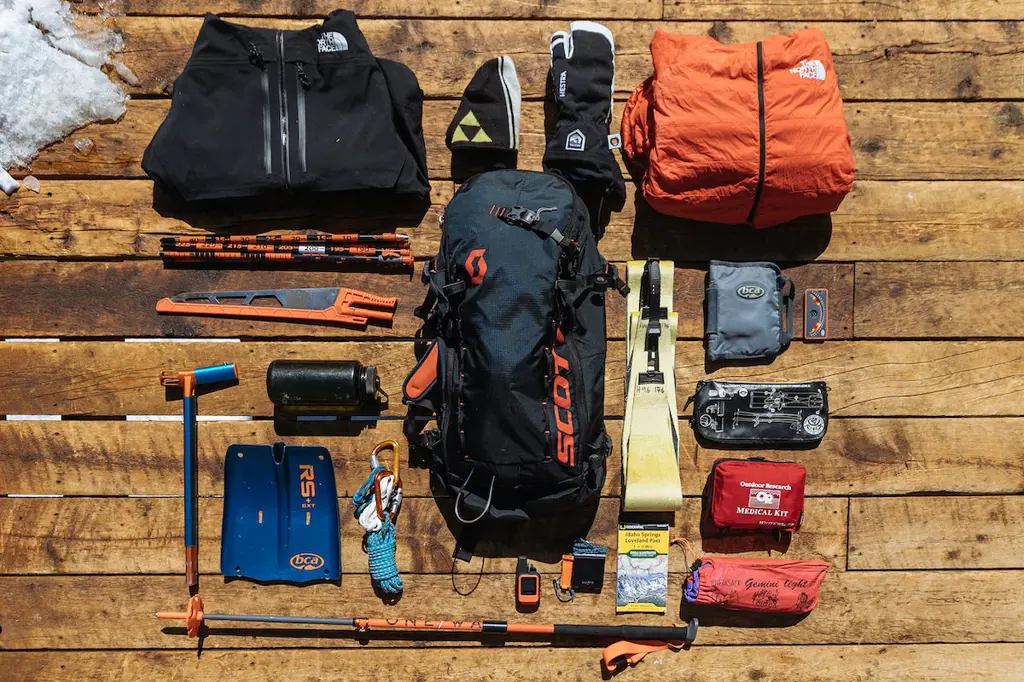
When heading out for a day on the slopes, it's important to pack a ski backpack with all the essential items to ensure a safe and enjoyable skiing experience. Here are some key items that should be included in your ski backpack:
- Avalanche Safety Gear: It's essential to carry avalanche safety gear, especially if you're planning to venture off-piste or ski in backcountry areas. This includes a shovel, probe, and an avalanche beacon. These tools can be life-saving in the event of an avalanche.
- Water and Snacks: Skiing is a physically demanding activity, and it's important to stay hydrated and fueled throughout the day. Pack a water bottle or hydration bladder in your backpack, and make sure to carry some high-energy snacks like granola bars or trail mix to keep your energy levels up.
- Extra Clothing Layers: Weather conditions can change quickly in the mountains, and it's important to be prepared for different temperatures. Carry extra layers of clothing in your ski backpack, including a waterproof jacket, a fleece or down jacket, and an extra pair of gloves or mittens. This way, you can add or remove layers as needed to stay comfortable.
- Sun Protection: The sun's rays are particularly strong at higher altitudes, and skiing exposes you to increased UV radiation. Pack a tube of sunscreen with a high SPF, a pair of UV-blocking sunglasses or goggles, and a hat or beanie to protect your face and head from the sun. Don't forget to apply sunscreen regularly, especially on exposed areas like your nose, cheeks, and ears.
- Ski Tools: It's always a good idea to carry some basic ski tools in your backpack, such as a small screwdriver or multi-tool. These tools can come in handy if you need to make any adjustments or repairs to your equipment while on the slopes.
- First Aid Kit: Accidents can happen while skiing, so it's essential to carry a basic first aid kit in your backpack. This should include items like band-aids, adhesive tape, pain relief medication, and blister plasters. It's also a good idea to include a small emergency blanket in case of a more serious injury or if you need to provide warmth to someone in distress.
- Ski Pass or Lift Ticket: Don't forget to pack your ski pass or lift ticket in a secure pocket of your backpack. This will ensure that you have easy access to it when needed, and also helps to prevent any loss or damage.
- Phone and Emergency Contacts: Carry your cell phone in a waterproof case in case of emergencies. Make sure it's fully charged before heading out and store emergency contact numbers in your phone or on a laminated card in your backpack.
Remember to pack your ski backpack the night before your trip to ensure you have all the necessary items and start your day on the slopes stress-free. Being prepared and having the essentials with you will help you make the most of your skiing adventure while staying safe and comfortable.
Essential Items to Pack for Your Stay in the Psych Ward
You may want to see also

Are there any specific safety items that should be included in a ski backpack?
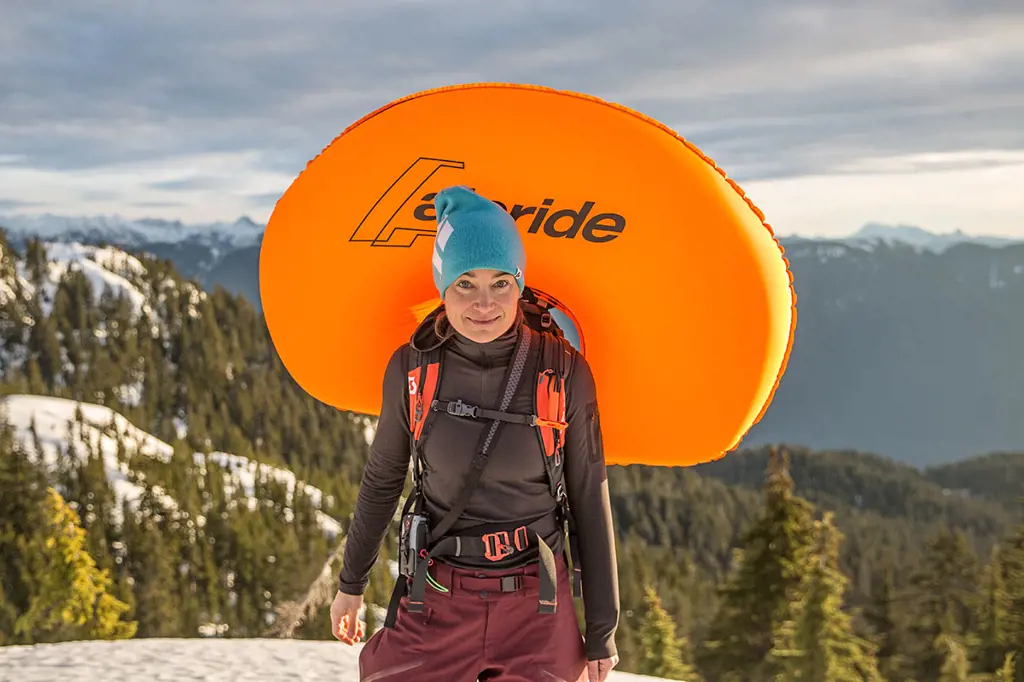
Skiing is a fun and exhilarating sport, but it can also be dangerous if proper precautions are not taken. When heading out for a day on the slopes, it is important to pack a ski backpack with essential safety items to ensure a safe and enjoyable experience. While the contents of a ski backpack may vary depending on individual preferences and the specific conditions of the ski area, there are a few key safety items that should be included in every skier's backpack.
First and foremost, a ski backpack should always include a helmet. Wearing a helmet while skiing is critical for protecting the head from injuries in the event of a fall or collision. Look for a helmet that fits properly and meets the appropriate safety standards. It is also a good idea to have a second pair of goggles in case the weather changes or the primary pair gets damaged.
In addition to a helmet, it is important to carry a rescue beacon in your ski backpack. A rescue beacon, also known as an avalanche transceiver, is a device that emits a signal to help rescuers locate skiers buried in an avalanche. These compact devices are easy to use and can mean the difference between life and death in an emergency situation.
Other safety items that should be included in a ski backpack include a first aid kit, a whistle, and a multi-tool. A first aid kit should include items such as bandages, antiseptic ointment, and pain relievers. The whistle can be used to attract attention in case of an emergency, and the multi-tool is useful for making quick repairs to equipment.
It is also important to pack extra layers of clothing in your ski backpack. The weather in the mountains can change quickly, and having extra clothing on hand can help prevent hypothermia and other cold-related injuries. Items such as a hat, gloves, and an extra jacket or sweater should be included.
Lastly, it is essential to carry a fully charged cell phone in your ski backpack. In case of an emergency, a cell phone can be a lifeline for summoning help. Make sure to keep your cell phone in a waterproof case or bag to protect it from moisture.
While these are some of the essential safety items that should be included in a ski backpack, it is important to customize your backpack based on your individual needs and the specific conditions of the ski area you will be visiting. Pay attention to the weather forecast and any warnings or advisories from the ski resort or local authorities.
In conclusion, packing a ski backpack with the right safety items is crucial for a safe and enjoyable skiing experience. Including essentials such as a helmet, rescue beacon, first aid kit, whistle, multi-tool, extra clothing, and a cell phone can help ensure that you are prepared for any situation that may arise on the slopes. Stay safe and have fun!
The Ultimate Guide: What to Pack for an Amazing Race TV Show Adventure
You may want to see also

What clothing and accessories should be packed in a ski backpack for changing weather conditions?
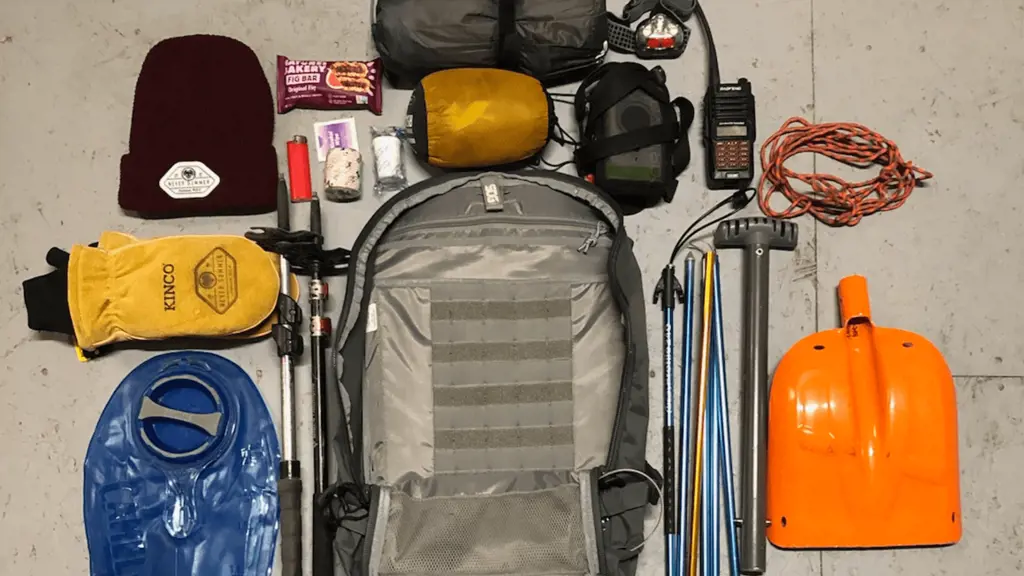
When going skiing, it is crucial to be prepared for changing weather conditions. Your ski backpack should be packed with the right clothing and accessories to keep you warm and dry in various situations. Here are some essential items to include:
- Base Layers: Start with a good set of base layers, including long underwear and a thermal top. Look for moisture-wicking materials that will keep you dry when you sweat.
- Insulating Layers: Depending on the temperature, pack insulating layers like fleece jackets or down vests. These can be added or removed according to the weather.
- Waterproof Jacket and Pants: A waterproof jacket and pants are essential for staying dry in wet or snowy conditions. Look for garments with sealed seams and breathable materials to prevent moisture buildup.
- Ski Socks: Invest in high-quality ski socks that are moisture-wicking and provide cushioning. It is best to pack an extra pair in case your feet get wet.
- Gloves or Mittens: Keep your hands warm with insulated gloves or mittens. Opt for waterproof options to keep your hands dry in case of snowfall.
- Helmet: A helmet is a must for ski safety. Make sure it fits well and provides proper protection. Some helmets come with adjustable vents to regulate airflow.
- Goggles: Good-quality goggles are essential for visibility in different weather conditions. Look for polarized lenses to reduce glare and protect your eyes from UV rays.
- Neck Gaiter or Buff: A neck gaiter or buff can protect your face and neck from cold winds. It can also be worn as a headband or hat if needed.
- Hand and Toe Warmers: Hand and toe warmers can be a lifesaver on extremely cold days. They are small packets that generate heat when activated and can provide extra warmth.
- Snacks and Water: Stay fueled and hydrated throughout the day by packing small, energy-dense snacks and a water bottle. Opt for high-protein options to keep your energy levels up.
It is essential to pack these items in a backpack that is comfortable to wear while skiing. Look for a backpack with multiple compartments to keep things organized and easy to access. Make sure it has straps or loops to hold your skis or snowboard securely.
Remember that weather conditions can change quickly in the mountains. It is always better to be over-prepared than underprepared. Layering is key to adjust your clothing according to the temperature and activity level. By packing the right clothing and accessories, you can enjoy your skiing experience without worrying about the weather.
The Ultimate Guide on What to Pack for Job Corps
You may want to see also

Are there any recommended food and drink items to pack in a ski backpack for energy and hydration on the slopes?
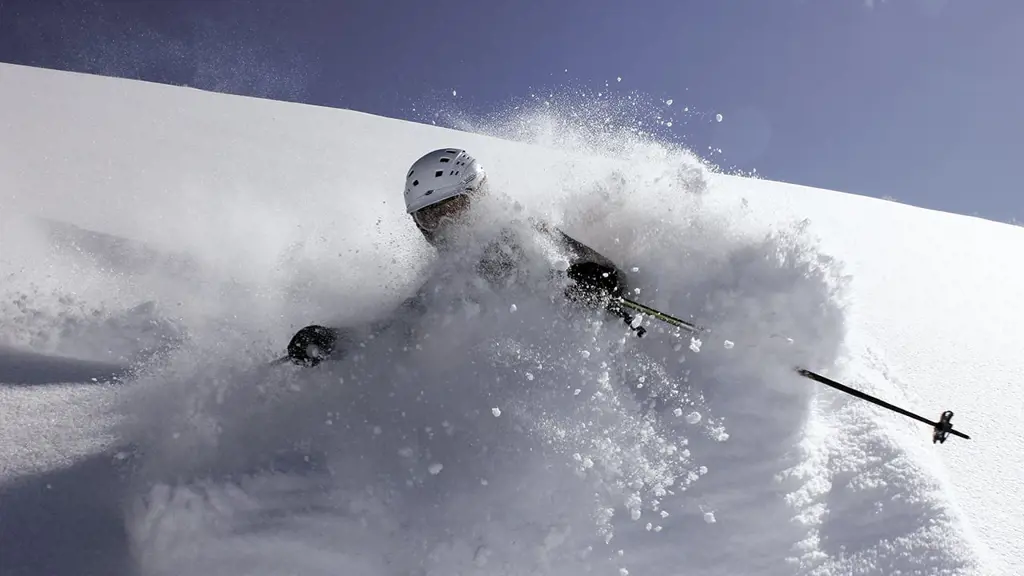
When hitting the slopes for a day of skiing or snowboarding, it is important to stay energized and hydrated. Packing the right food and drink items in your ski backpack can provide the necessary fuel for a full day on the mountain.
To maintain energy levels, it is recommended to pack snacks that are high in carbohydrates and protein. These nutrients are essential for sustained energy and muscle recovery. Some great options include energy bars, trail mix, and jerky. Energy bars are convenient and come in a variety of flavors and formulations to meet individual preferences and dietary needs. Trail mix, with a mix of nuts, dried fruits, and chocolate or yogurt-covered treats, provides a tasty and nutritious option. Jerky, whether it be beef, turkey, or vegan alternatives, is packed with protein and makes for a portable and filling snack.
In addition to snacks, it is crucial to stay hydrated throughout the day. The cold, dry air at higher altitudes can lead to increased water loss through respiration and sweating. Drinking water regularly can help prevent dehydration and keep energy levels up. It is recommended to pack a water bottle in your ski backpack and take regular sips throughout the day. If you prefer flavored drinks, make sure to choose options that are low in sugar and additives. Electrolyte-enhanced beverages, such as sports drinks or powdered electrolyte mix, can also be beneficial for replenishing minerals lost through sweat.
To ensure that you have enough food and drink to last the day, it is a good idea to pack more than you think you will need. Aim to consume small, frequent snacks and drink water regularly to maintain energy and hydration levels. It is also important to listen to your body's hunger and thirst cues. If you start to feel fatigued or thirsty, take a break and refuel.
Lastly, it is worth considering the storage and accessibility of your food and drink items in your ski backpack. Look for a backpack with pockets or compartments specifically designed to hold water bottles and snacks. This will make it easier to access your fuel while on the slopes and ensure that it stays fresh and intact. Additionally, make sure to pack your food and drink items in ziplock bags or containers to prevent spillage and keep everything organized.
Overall, packing the right food and drink items in your ski backpack can greatly enhance your skiing or snowboarding experience. By focusing on snacks high in carbohydrates and protein and staying hydrated with regular water consumption, you can maintain energy levels and stay on top of your game on the slopes. Remember to pack extra and listen to your body's cues for refueling to optimize your performance and enjoyment on the mountain.
The Essential Packing Guide for Traveling to Costa Rica
You may want to see also

Is there any additional equipment or gear that should be packed in a ski backpack, such as a repair kit or extra ski pole?
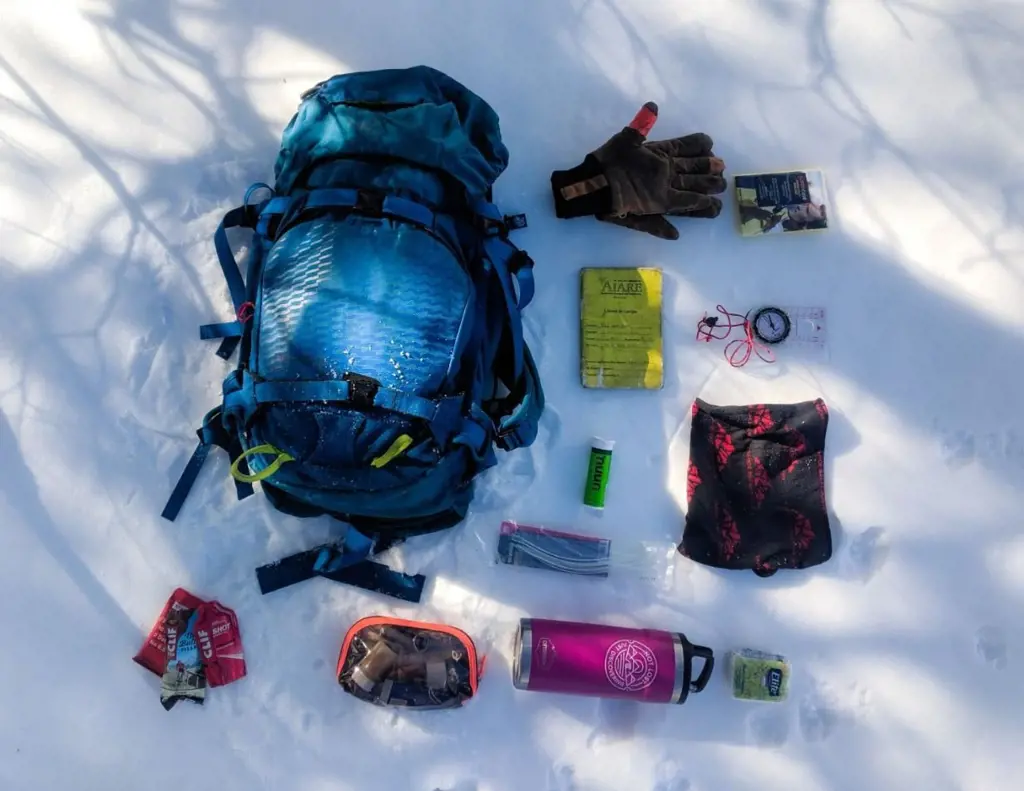
When heading out for a day of skiing, it's important to pack everything you might need in your backpack. Aside from the obvious essentials, such as extra layers, water, and snacks, there are a few additional items that can come in handy on the slopes. One such item is a repair kit, which can help you fix any minor equipment issues that may arise during the day.
A repair kit for skiing typically includes items like a small screwdriver set, spare screws, and extra parts for your ski bindings. These tools can be used to tighten or replace screws that may come loose, ensuring that your bindings remain secure throughout the day. Having these tools on hand can prevent a potentially dangerous situation and allow you to continue skiing without interruption.
Another piece of equipment that can be useful to carry in a ski backpack is an extra ski pole. Ski poles are essential for balance and stability while skiing, so if one were to break or get lost, having a spare pole can be a lifesaver. Carrying an extra pole is especially important if you're backcountry skiing or venturing off the beaten path, as help may not be readily available in these remote areas.
In addition to a repair kit and spare ski pole, there are a few other items that you may want to consider packing in your ski backpack. One such item is a small first aid kit, which should include supplies like band-aids, blister pads, and a tensor bandage. Skiing, especially in challenging terrain, can increase the risk of injuries, so having these supplies on hand can help you treat minor wounds or discomforts.
It's also a good idea to pack a small sunscreen tube and lip balm with SPF in your backpack. The reflective snow and high altitude can amplify the effects of the sun's rays, increasing the risk of sunburn and chapped lips. Applying sunscreen and lip balm regularly throughout the day can help protect your skin from these harmful effects.
Lastly, consider bringing a small multi-tool in your backpack. This can be helpful if you need to make any adjustments to your gear or if you encounter any unexpected challenges on the mountain. A multi-tool typically includes tools like a knife, pliers, and a screwdriver, which can come in handy in a variety of situations.
In conclusion, when packing your ski backpack, it's important to consider bringing a few additional items that can enhance your skiing experience and ensure your safety on the slopes. These items may include a repair kit, spare ski pole, first aid kit, sunscreen, lip balm, and a multi-tool. By having these items readily available, you'll be prepared for any equipment issues, minor injuries, or unexpected situations that may arise while skiing.
Essential Packing Guide for the Kentucky Youth Assembly
You may want to see also
Frequently asked questions
When heading out for a day on the slopes, it's important to pack a few essentials in your ski backpack. First and foremost, bring extra layers of clothing, such as a warm hat, gloves, and a neck gaiter, in case the weather changes or you get wet. A small first aid kit with band-aids, pain relievers, and any necessary medications is also important to have on hand. Finally, make sure to pack some snacks, water, and sunscreen to keep yourself fueled and protected from the elements.
It's a good idea to carry a few tools and equipment in your ski backpack in case of emergencies. A small multi-tool with a screwdriver, wrench, and knife can come in handy for making quick adjustments or repairs. Additionally, carrying a spare goggle lens and a spare set of ski bindings can save the day if you experience any equipment failures on the mountain.
When packing your ski backpack, it's important to distribute the weight evenly to maintain balance and avoid strain on your back. Start by packing heavier items closer to your back, such as food, water, and any tools or equipment. Place lighter items, like extra layers or a camera, towards the outside of the pack. Avoid overpacking and try to keep the weight centered to prevent any unnecessary strain or discomfort during your day on the slopes.







